We Stand on Broad Shoulders: Celebrating 175 Years of The LCMS
Share
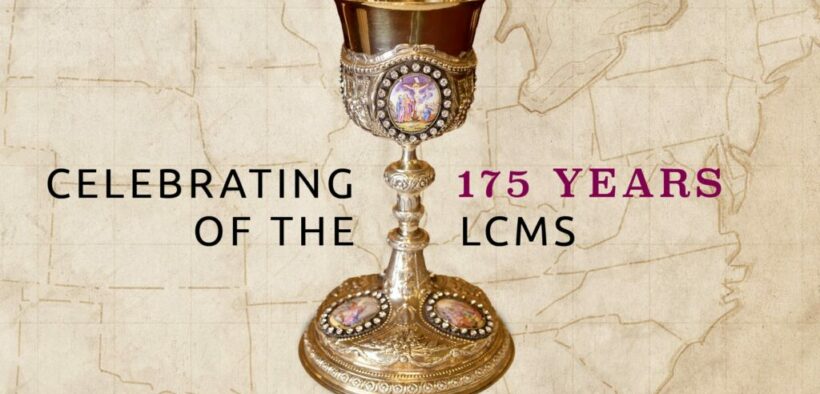
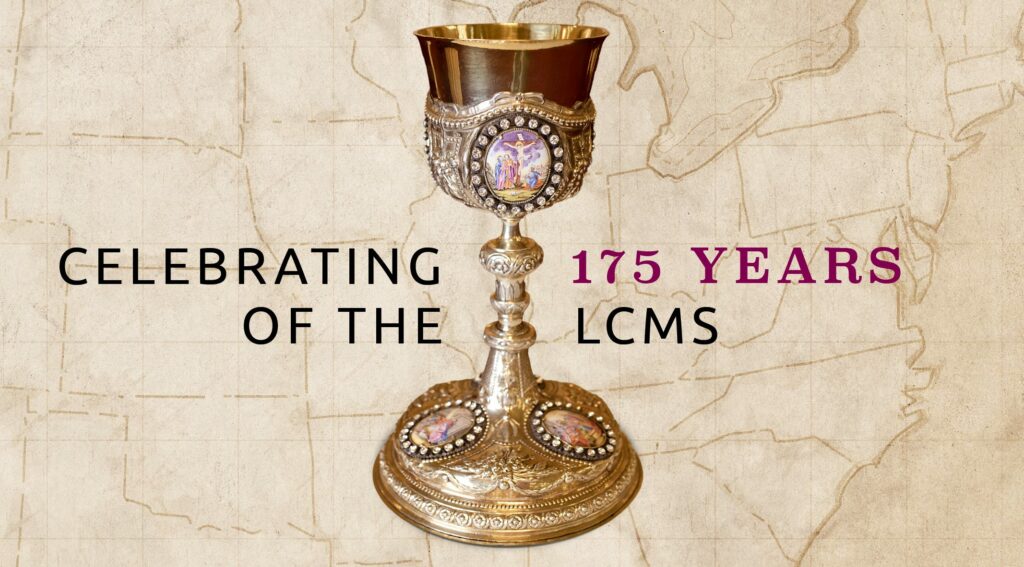
Having traveled the distance from Saxony, Germany, to the pioneer country of the United States of America, Lutheran immigrants from the old country left behind everything they knew and stepped foot into the unknown. If Lutherans don’t like change, certainly no one told these brave Europeans.
But they came from Germany and other areas of central and northern Europe for good reasons, and that can motivate even the most change-averse people. They came to escape poverty and high taxes for the hope of starting a new life in a new land and to evangelize as missionary colonists — these all played into the big move. The real reason, though, was much bigger: They were largely seeking religious freedom.
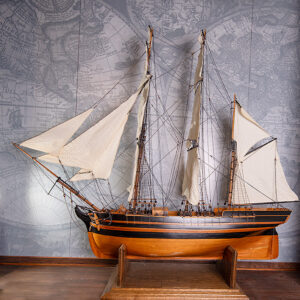
A model of the “hualco” sailing ship that transported Lutherans to the Americas in the mid-1800s. It carried 100-plus passengers.
“A significant part of the reason the Saxons emigrated in 1839 was an effort to preserve their Lutheran heritage, or at least their understanding of it,” shared Rev. Gerhard Bode, seminary archivist, associate professor of Historical Theology, and chairman of the Department of Historical Theology at Concordia Seminary in St. Louis, Mo. “They wanted to keep safe the Christian Gospel and its truth among them; they wanted to be free to teach it to their children without fear of persecution. This was the chief reason that they gave at the time for the emigration; it was the official reason. They believed the United States represented the promise of a new future and hoped to take advantage of the opportunities it offered.”
Early Lutheran settlers came to the upper Midwest and Texas in the 1830s, 1840s and 1850s by way of New Orleans on a riverboat. Many — especially the Saxons, who made up roughly two-thirds of the more than 900 Lutherans — chose Missouri in particular because it was the frontier at the time. Land was available and relatively inexpensive. Other Lutherans made their homes in Indiana, Michigan and Ohio after traveling on the Erie Canal.
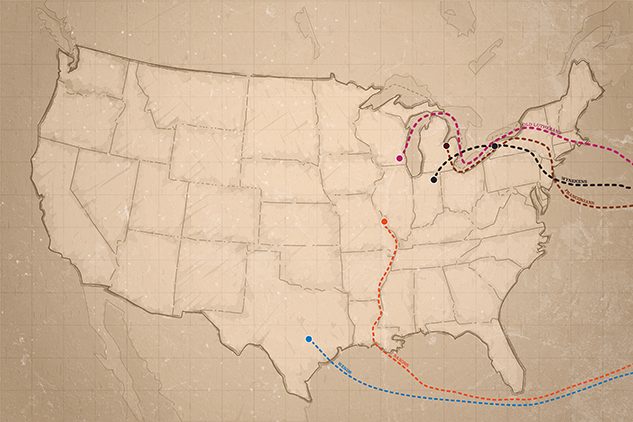
A rough start
According to Bode, the Lutherans faced plenty of challenges right from the beginning. Many endured economic hardship, poverty and other difficulties, all in the midst of working to establish their own congregations, schools, colleges, seminaries and other institutions like a publishing house, hospitals, orphanages, and more.
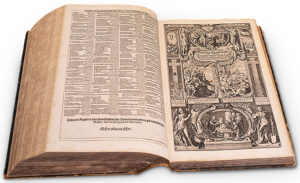
This Bible, which contains Martin Luther’s German translation, was printed in 1665 and belonged to C.F.W. Walther. It is on permanent display at the LCMS International Center.
Even before all of that work got off the ground, however, the Lutherans came up against a dramatic unfolding with Rev. Martin Stephan, the pastor from Dresden, Germany, who organized and led them to America in the first place.
“Money was a problem right from the beginning, as the Lutherans had a limited amount that they came over with,” explained Rev. Dr. Daniel Harmelink, executive director of the Concordia Historical Institute. “Then Stephan, as their new bishop, purchased expensive vestments, a horse and carriage and more. The resources dwindled quickly.”
“It was one disaster or failure or hardship after the other,” said Harmelink. “After saying their final goodbye to their family members and neighbors in Germany, they had journeyed to begin a new life of religious freedom in North America — only to find out that their charismatic leader was a scoundrel. They quickly banished him from their midst, rowing Stephan across the Mississippi and expelling him on the Illinois shore.
With their bishop now gone, the Lutherans wondered — are we still a church?
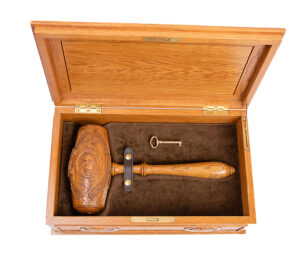
A gavel carved from wood taken from an original log cabin in Perry County, Mo.
Thankfully, C.F.W. Walther, who would become the first president of the Lutheran Church — Missouri Synod (LCMS), came on the scene and comforted them with God’s truth in the Gospel.
“Walther argued that the Christian church doesn’t depend on the bishop or the pastor, but the gathering around Word and Sacrament,” said Harmelink. “Walther assured them that they were still a legitimate Christian church. In some ways, he saved them from quitting and going back to Germany.”
Meanwhile, the early Lutherans, not unlike us today, would find a need to clarify their beliefs and mission amid the new American culture.
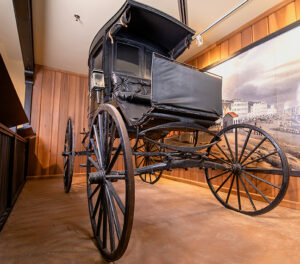
C.F.W. Walther’s carriage was a gift from his parishoners to aid him in getting around the St. Louis region to the four churches he pastored.
“The enduring influences of rationalism and American evangelicalism or revivalism on many churches in America affected Christians around the new immigrants in America,” Bode said. “There is an early concern among many to preserve Lutheran identity and heritage against the threats of unionism, syncretism and rationalism — and this is especially
the case in America where there is no established religion.”
Bode added that the Lutherans were also concerned for evangelization and mission work in their new land, as North America was a “very unchurched place with few churches and fewer pastors.”

Above, a replica of the log cabin at Altenburg, Perry County, Mo., the first Concordia Seminary built in 1839. This replica was erected by the Concordia Historical Institute in 1938. Early Lutherans in Perry County, Mo., didn’t focus on building churches. Education was a priority. They built one-room schoolhouses to educate children and train pastors and teachers. Click the photo above to learn more.
Set apart
The fledgling LCMS, started in April 1847, was different from the other churches in America in the 1800s and beyond. They were steadfastly faithful in the face of suffering, setbacks and disasters, and never took their eyes off of Christ.
Bode explained that, for them and for us, “The dedication of Synod’s church workers and congregations to the Scriptures and the Lutheran Confessions as a confessional, doctrinal base for what we believe, teach, confess and practice as a church [sets us apart, as does] our dedication to evangelism and mission work, both domestic and foreign.”
For that reason, we are wise to thank God for and learn from these early Lutherans.
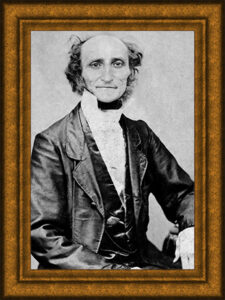
Carl Ferdinand Wilhelm Walther (1811-1887), the founder of the Lutheran Church–Missouri Synod (LCMS), immigrated to the United States from Langenchursdorf, Saxony and settled in St. Louis, Missouri. He served as the first president of the LCMS from 1847 until his death in 1887. Throughout his life, Walther remained committed to the importance of confessional Lutheranism and the authority of the Lutheran confessions, particularly the Book of Concord. His efforts to maintain fidelity to Lutheran doctrine and practice helped shape the identity of the LCMS as a conservative
and confessional Lutheran body.
The legacy of C.F.W. Walther as a theologian, church leader and advocate for confessional Lutheranism continues to influence the LCMS and the broader Lutheran community. Click Walther’s photo to learn about 10 influential people in the history of the LCMS.
“God is the Lord of His church!” said Bode. “The people of the Synod are called to be faithful to God’s Word and to bring this message to the next generation. The dedication and witness of the early LCMS is one to emulate and commend, and one for which we should thank and praise God.”
Rev. Dr. Lawrence Rast, president of Concordia Theological Seminary, Ft. Wayne, Ind., sees our generation of LCMS Lutherans in a similar light.
“We tend to think that the people who founded the LCMS were just ‘Germans,’” he shared. “That’s true, but there was more to it. They also thought of themselves — perhaps first of all — as Saxons, or Prussians, or Hannoverians, or some other of the many other independent entities that made up the German nation (Germany was not a united nation until 1871 after the Franco-Prussian War). So, when this little group of twelve pastors and sixteen congregations with around 3,500 to 4,000 members came together, they shared a language. But they had overcome some pretty significant differences in background, culture, dialect, reasons for coming to America and even their understanding of what it meant to be a Lutheran. What united them, in the end, was their shared confession of Christ and His Gospel that was coupled with a deep commitment to mission.”
“The LCMS today is made up of people of different cultures and perspectives,” Rast added. “But what we can learn from the founders is the absolute centrality of their shared confession of Christ that compelled them to share it boldly and vigorously in the time and place where God put them. The opportunities for faithful confession in mission are as abundant today as they were in 1847.”
The story of the history of the LCMS is truly incredible. It wasn’t always beautiful. It wasn’t without suffering. It also wasn’t without joy.
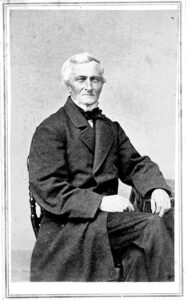
Theodore Julius Brohm was a candidate of theology and the personal secretary of Martin Stephan, the pastoral leader who guided the Saxons to Missouri. He was among the passengers on the ship to Missouri and journaled the experience. Click the photo to read his journal.
“After reading the history, it’s actually incredible that we are still a Synod!” said Harmelink. “There were so many opportunities where people could quit, pack up and go somewhere else, but the courage and the resilience and God-given faith of the LCMS people to, in the face of crisis and failure, have the courage to say, ‘Christ will continue to be faithful as we are faithful to his Word and the confessions’ — it is incredible that that continues and that God continues to bless our Synod despite everything. When you read the history, it looks like a novel, but it really happened. Christ is faithful. That is the takeaway. He continues to forgive us for our many sins and says He will continue to sustain us as a Church.”
175 years, all gift
To preserve the Gospel, early Lutherans thought a change was necessary. Religious freedom should never be underestimated. When asked to compromise, they said, ‘No, we aren’t going to bend the knee to that.’ Here in the LCMS today, we carry on that legacy of staying faithful to our confession and prioritizing Christ and His unchanging Church. Like them, we have an eternal perspective. Like them, we are treasured by God and preserved by Him.
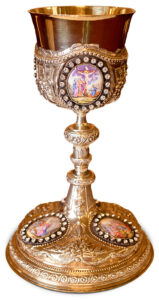
The Lutherans who landed in present day Perry County, Mo., brought two communion chalices with them, including the one pictured above. Click the photo to learn where you partake in Holy Communion from this historic chalice.
“What is most astounding to me is how God drew together a disparate little group of people into a Synod, and how He has remained faithful to the church body they founded over 175 years ago,” said Rast. “We are all clay pots, people broken by sin, but — thanks be to God! — forgiven and restored through the death and resurrection of Jesus Christ. While the circumstances in which we confess Christ are very different today than what the founders faced, the need for the faithful proclamation of the gospel remains as central to our life together today as it was in 1847.”
Suddenly, 175 years doesn’t seem that long ago — and those early Lutherans are not too much different from us. Indeed, we stand on broad shoulders. And someday, to be sure, we’ll stand together with them again, shoulder to shoulder, in the full presence of Christ.
LCEF wishes to extend deep appreciation to the Concordia Historical Institute (CHI) for assisting with this article. Visit concordiahistoricalinstitute.org to learn how you can visit one of CHI’s two museums.
